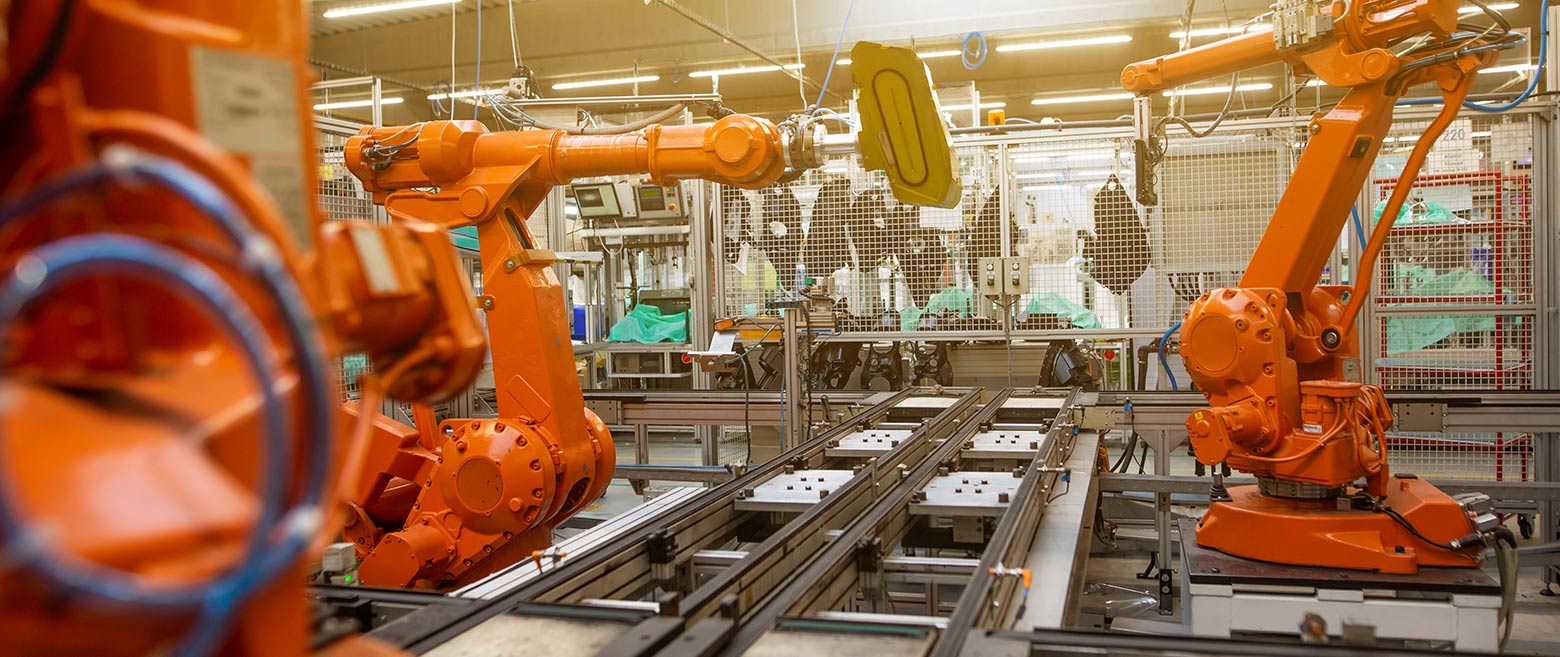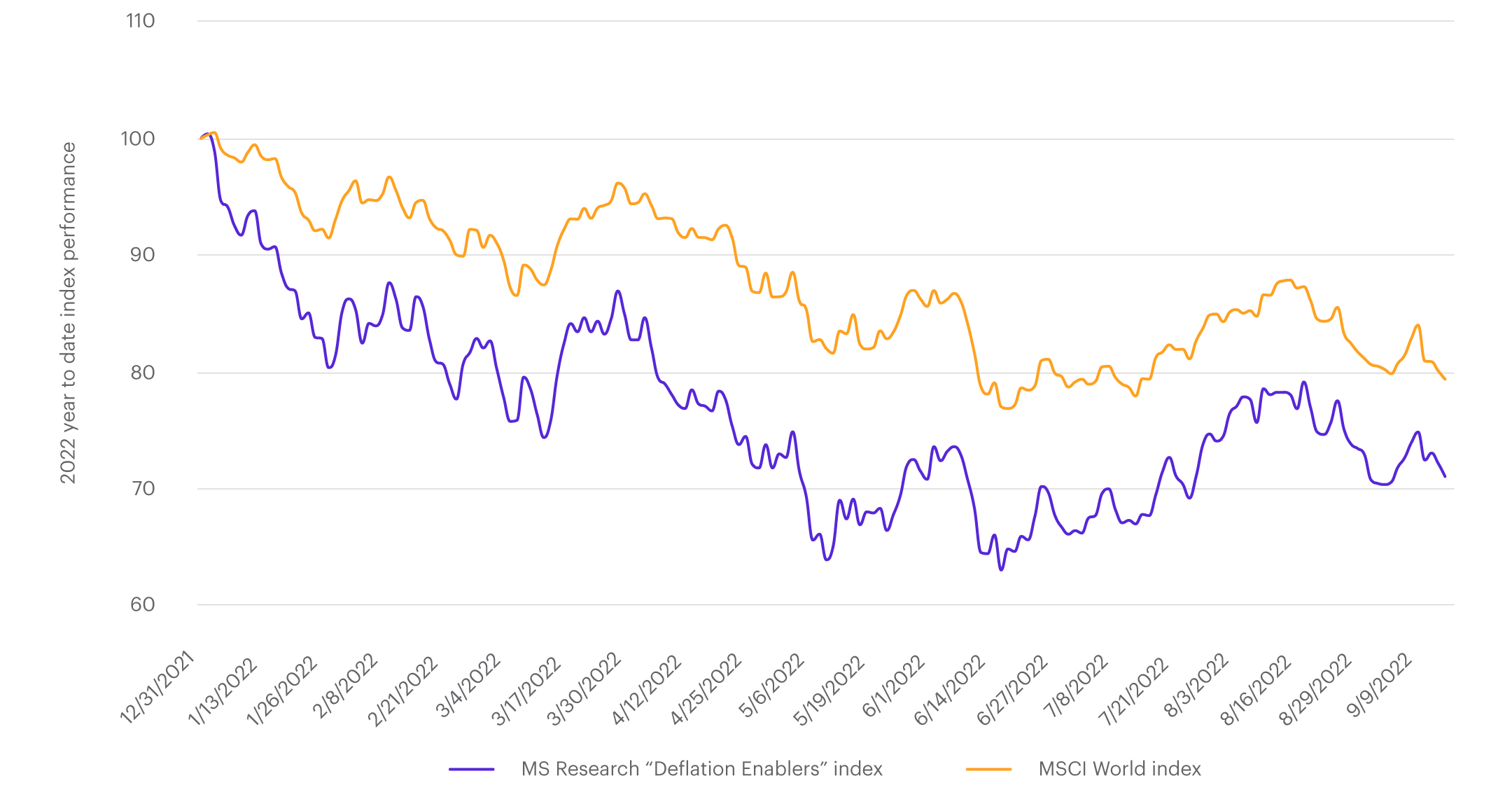How technology can guard against the impacts of inflation
Morgan Stanley Research
10/12/22Summary: As companies try to shore up profit margins amid high inflation, Morgan Stanley sees an investment opportunity among sectors producing technologies to reduce costs and increase productivity.

The sudden and rapid return of inflation has not only made daily living more expensive, it has dramatically increased the cost of doing business. Companies across industries are now contending with record energy prices as well as higher costs for labor, supplies, and services.
This shift is driving historic investments in services and technologies that can mitigate the effects of inflation—and that’s good news for companies focused on increasing productivity. As companies dedicate more capital toward shoring up their profit margins, analysts with Morgan Stanley Research see an investment opportunity in companies producing technologies that increase productivity–particularly in automation and digitization, where barriers to entry are high.
“With infrastructure now at the forefront of the political landscape and the cost of labor and capital on the rise, corporate investments are likely to pivot toward productivity enhancement and technologies that can lower the cost of doing business,” says Josh Pokrzywinski, US electrical equipment and multi-industry analyst at Morgan Stanley Research.
We believe companies that provide innovative and cost-effective solutions will see heightened demand and greater competitive advantages in their respective industries.
Refocus on productivity
While technology has had a profound influence on cost reduction for many years, its impact was overshadowed by decades-long deflation, driven by the overarching factors of slower demographic growth and globalized manufacturing. But that narrative has been upended by COVID-induced supply-chain bottlenecks, rising geopolitical tensions, and increased focus on energy security. This shift in circumstances should result in companies prioritizing spending that will help to increase productivity, lower costs, and improve profitability.
In the US, the average age of private fixed assets, such as properties, plants, and equipment, is at the highest level since the 1950s, which has contributed to a 20-year decline in productivity growth. But the historic underinvestment in productivity enhancement underscores the value of automation and digitization – particularly amid a renewed government emphasis on investing in infrastructure, rather than lowering interest rates and reducing the deficit.
“All told, we believe the incentives are now in place for organizations to refocus their efforts on automation and productivity-driving technologies,” says Pokrzywinski. “The companies that can deliver such solutions for customers are more likely to profit from the higher prices and more volatile economic environment that we expect over the next decade, offering a relatively attractive risk-to-reward investment proposition.”
Inflation armor
Companies that help their customers boost productivity and reduce costs through automation, efficiency, or their own declining cost curves, while maintaining strong barriers to entry—what Morgan Stanley analysts call “deflation enablers”—pose attractive investments in an inflationary environment.
Before the pandemic, valuations for these deflation enablers were mostly aligned with the MSCI World Index—which tracks large-cap and mid-cap companies across developed markets. Those companies saw a spike in valuation that carried through the end of 2021, but that trend flipped in the beginning of this year. Recently, the companies identified as providing technology and services to cut costs and boost efficiency have been trading at a discount to the broader market.
Companies that help combat inflation appear undervalued

There are three major technologies, which touch the majority of sectors and are at long-term inflection points, that stand out as deflation enablers: artificial intelligence, clean energy, and mass energy storage and mobility.
Artificial intelligence
AI models are improving faster than predicted by conventional models, thanks to cheaper and increasingly powerful computing capabilities. The biotech sector, for example, has been using machine learning and AI to discover new drugs more cheaply, quickly, and efficiently. Morgan Stanley believes this trend could lead to dozens of new therapies, potentially creating a $50 billion market over the next decade. AI could have a similarly transformative impact in other industries, and as many companies are currently undervalued relative to the broader market, represent an opportunity for investors.
Clean energy
The transition away from fossil fuel will be a long and delicate balance, complicated by geopolitics, climate change and a heightened focus on energy security, and is ultimately expected to be highly inflationary. Morgan Stanley thinks that companies with unique clean-energy technologies and few competitors will be able to improve their profit margins with increased investment, offering better value to investors. Many clean tech stocks aren’t pricing in a strong growth picture, and analysts recommend investors focus on companies benefitting from the widening spread between high utility bills and falling clean energy costs.
Mass energy storage
Cheaper and widely available battery storage could be transformative for a number of industries. For example, long-haul and heavy-duty trucking have been acutely pressured by high labor and fuel costs and scarcity of workers; a transition to battery-powered vehicles could reduce costs and help to offset these costs. Advances in mass energy storage are also expected to aid further development of electric vehicles, and ultimately autonomous vehicles. Currently, battery technology is far from reaching its full potential, and investors should watch for the total addressable market for companies in the space to expand significantly as the technologies become less expensive and more end users are able to use their products and services to lower costs.
Adapting to the environment
While AI, clean energy, and mass energy storage are broad categories of technologies that combat the effects of inflation, they are hardly alone. Other technologies meet the needs of particular industries. “These range in form and function from automation tools designed to reduce increasingly expensive headcount in organizations, to cost-saving booking software for airlines who must find ever-more innovative ways to offset rising jet-fuel prices,” says Pokrzywinski.
For other investment opportunities amid expected prolonged inflation, Morgan Stanley analysts say investors should consider a wide range of firms providing services that use automation technology—such as robotics used in manufacturing, software to optimize business processes and IT hardware for such things as self-checkout technology—to help manage the current inflationary environment.
The source of this article, How Technology Can Guard Against the Impacts of Inflation, was originally published on September 21, 2022.